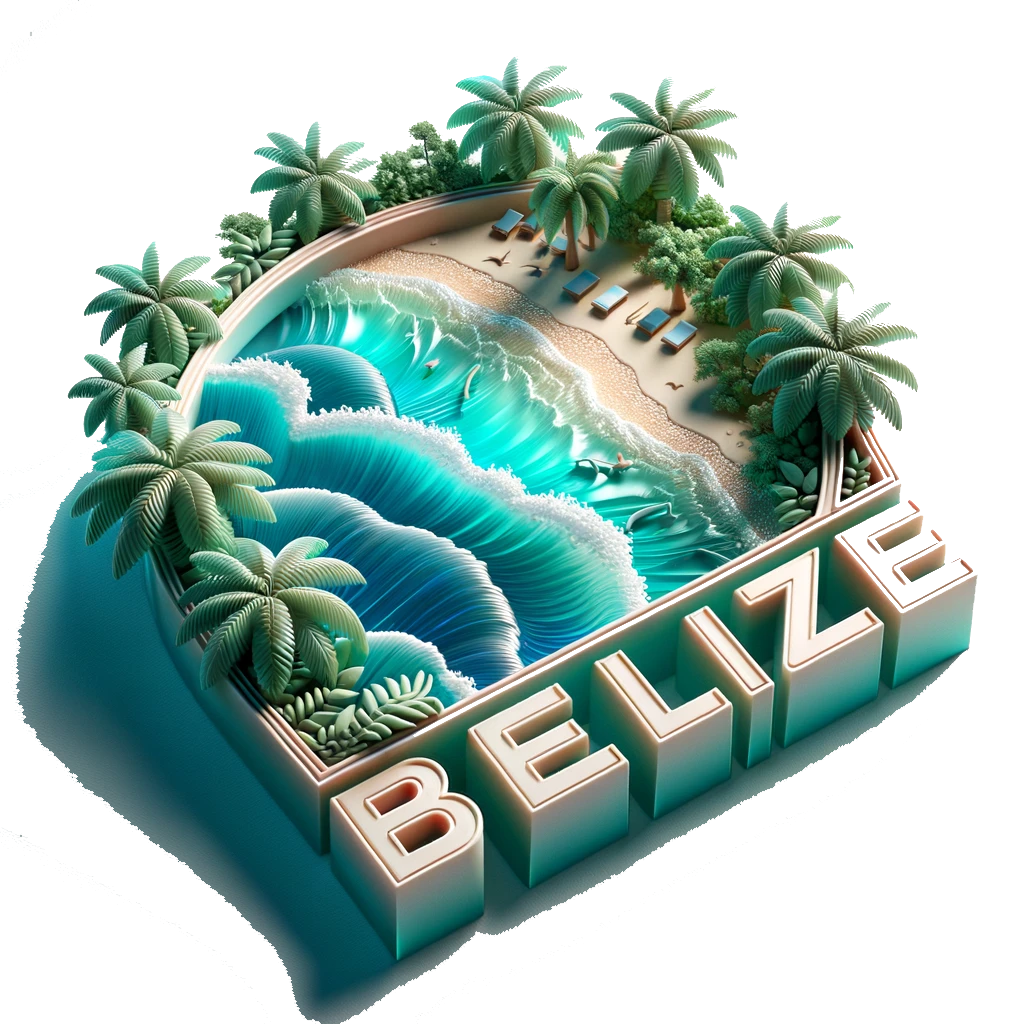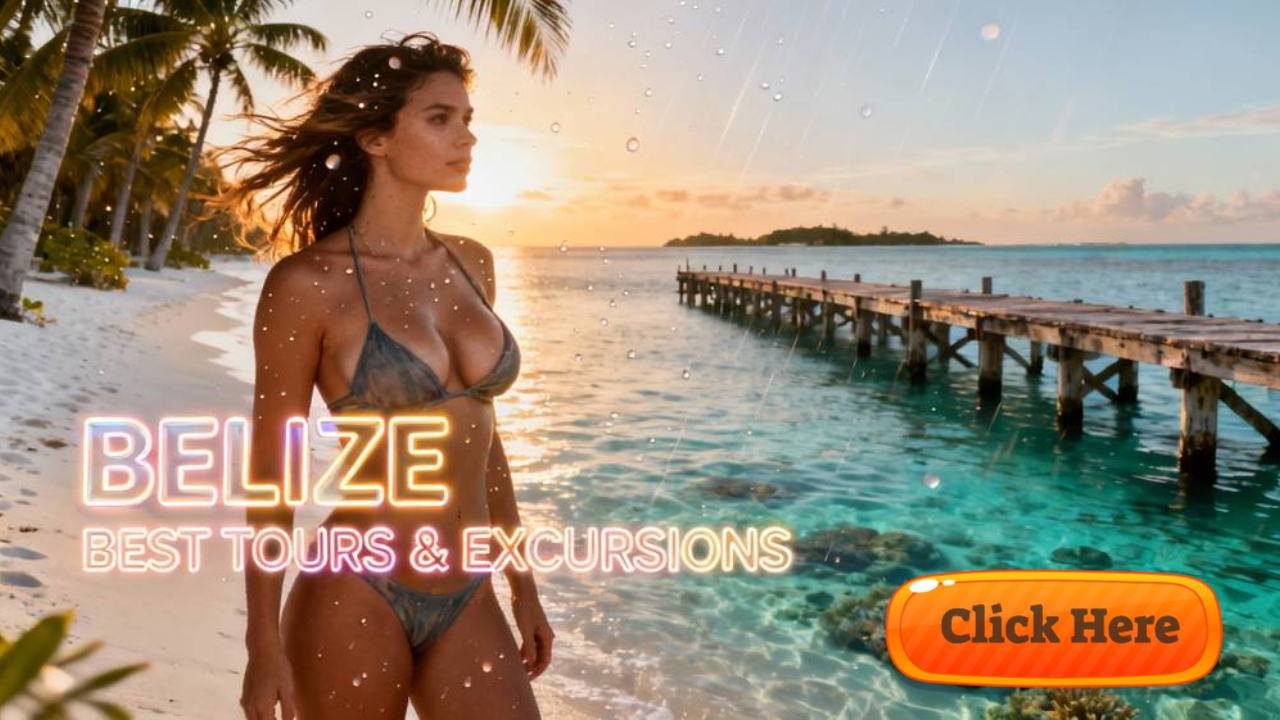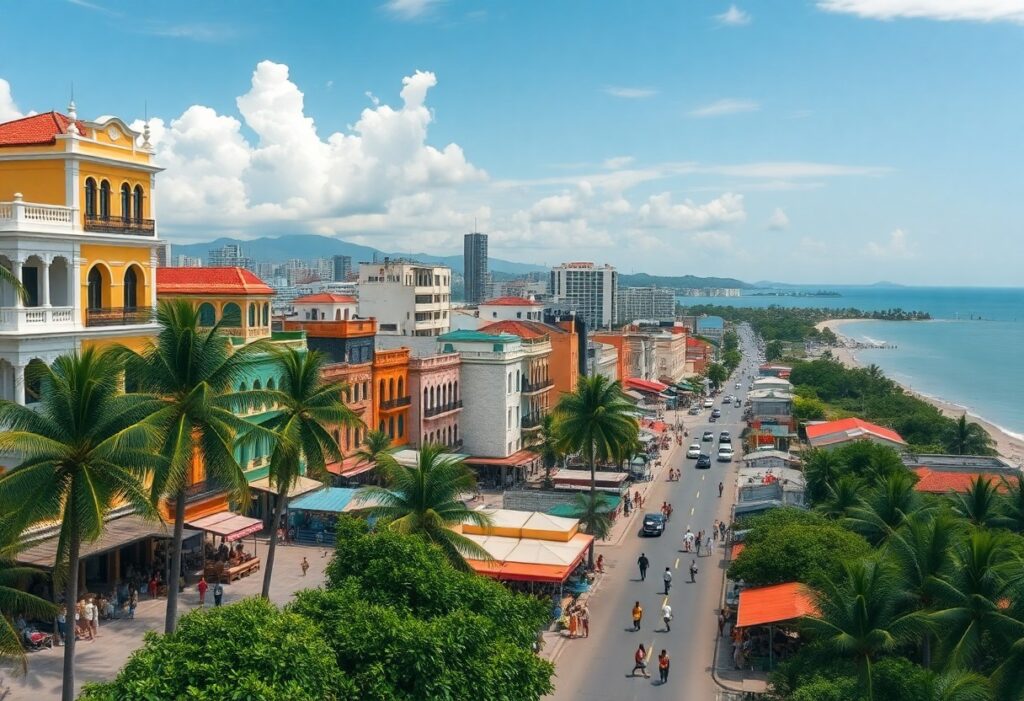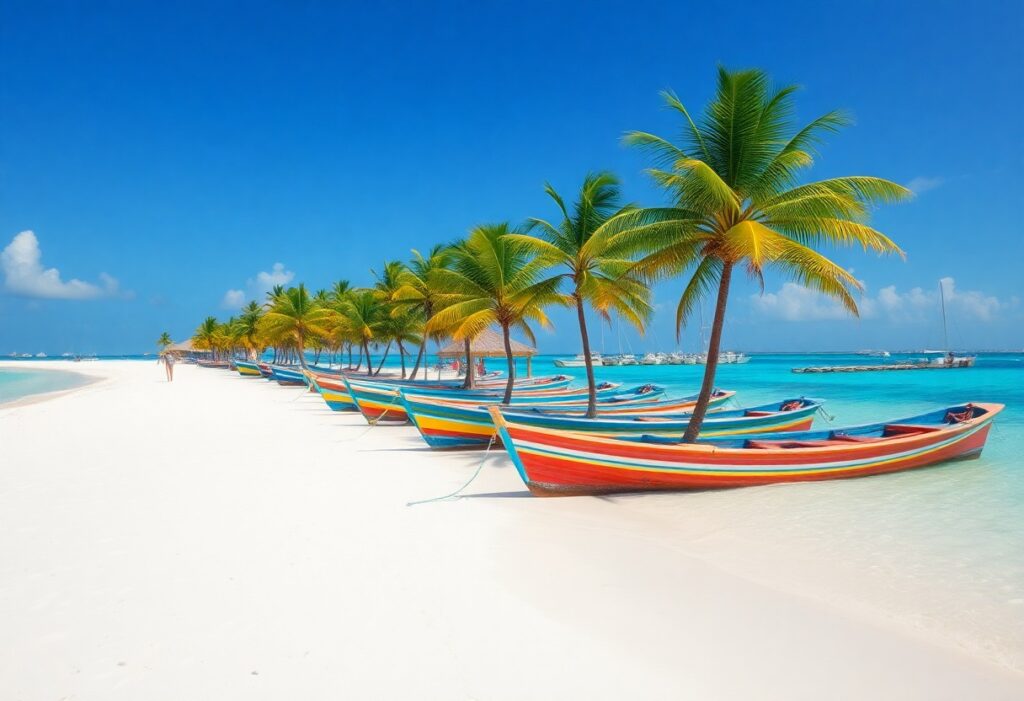Most visitors seek Belize’s treasures without knowing where to start their journey across this diverse Central American jewel. You’ll discover six distinct districts, each home to remarkable landmarks that showcase the country’s rich heritage. From the ancient Maya ruins in the north to the pristine waterfalls in the south, your exploration will reveal a unique blend of historical, cultural, and natural wonders. Whether you’re planning your first visit or returning to uncover more hidden gems, this district-by-district guide will help you navigate Belize’s most iconic landmarks.
![]()
Types of Landmarks in Belize
A diverse collection of landmarks spans across Belize’s six districts, showcasing the country’s rich heritage and natural splendor. From ancient Maya ruins to pristine waterfalls, each site offers unique experiences for visitors. Perceiving these landmarks helps you understand Belize’s historical and ecological significance.
| Type | Examples |
|---|---|
| Archaeological Sites | Xunantunich, Lamanai, Caracol |
| Natural Wonders | Great Blue Hole, Rio Blanco Falls |
| Cultural Sites | St. John’s Cathedral, Drums of My Fathers |
| Marine Landmarks | Hol Chan Marine Reserve, Shark Ray Alley |
| Historical Buildings | Government House, Baron Bliss Lighthouse |
Archaeological Landmarks
Landmarks from the Maya civilization dot the Belizean landscape, offering you glimpses into an ancient world. These sites feature towering pyramids, elaborate ball courts, and intricate stone carvings, dating back to 2000 BC.
Natural Landmarks
On your journey through Belize, you’ll encounter breathtaking natural wonders. From the world-famous Great Blue Hole to the pristine waterfalls of Mountain Pine Ridge, these sites showcase Belize’s ecological diversity.
Belize’s natural landmarks include protected areas spanning from the Caribbean Sea to the Maya Mountains. You’ll find dense rainforests, crystal-clear rivers, and the second-largest barrier reef in the world.
Cultural and Historical Sites
An array of cultural landmarks reflects Belize’s diverse heritage. From colonial-era buildings to Garifuna monuments, these sites tell the story of the nation’s rich cultural tapestry.
Plus, these historical sites offer you insights into Belize’s colonial past and its journey to independence. Each location preserves significant moments in the country’s development, from the British colonial period to modern times.
District-by-District Landmark Guide
If you’re planning to explore Belize’s diverse regions, each district offers unique historical and natural wonders that will captivate your senses. From ancient Maya ruins to pristine waterfalls, your journey through these districts will reveal Belize’s rich cultural heritage and natural beauty.
Corozal District Highlights
With its strategic location near the Mexican border, you’ll discover ancient Maya trading posts and coastal attractions. The Santa Rita Archaeological Site stands as a testament to Maya civilization, while the serene Corozal Bay offers spectacular sunset views.
Orange Walk District Features
Landmark sites in this district showcase Belize’s most impressive Maya ruins. The majestic Lamanai Archaeological Reserve, accessible by a scenic river boat tour, rises above the jungle canopy, offering you breathtaking views of ancient pyramids.
Corozal’s neighbor, Orange Walk, enhances your archaeological experience with extensive nature trails and wildlife viewing opportunities. You’ll encounter howler monkeys, toucans, and crocodiles along the New River during your journey to these ancient sites.
Belize District Attractions
Some of your most memorable experiences await in the Belize District, where colonial architecture meets Caribbean culture. The iconic Baron Bliss Lighthouse and St. John’s Cathedral stand as reminders of the district’s historical significance.
Highlights of your visit will include the Museum of Belize, housed in a former prison, and the bustling Albert Street shopping area. The district serves as your gateway to the cayes, with water taxis departing regularly to island destinations.
Cayo District Landmarks
Corozal’s western counterpart, the Cayo District, houses Belize’s most dramatic cave systems and Maya sites. Xunantunich and Cahal Pech provide you with panoramic views of the Belize River Valley.
District features include the Mountain Pine Ridge Forest Reserve, where you can explore waterfalls, caves, and natural pools. The twin towns of San Ignacio and Santa Elena serve as your perfect base for adventure tourism.
Stann Creek District Points of Interest
For cultural immersion, you’ll find the Stann Creek District’s Garifuna communities and pristine beaches captivating. The Cockscomb Basin Wildlife Sanctuary offers you world-class jaguar preservation viewing opportunities.
Orange Walk’s southern neighbor presents you with the vibrant town of Dangriga, where Garifuna drums echo through the streets. The nearby Placencia Peninsula provides you with 16 miles of golden beaches and lagoon views.
Toledo District Monuments
District landmarks in Toledo showcase Belize’s most pristine rainforests and untouched Maya sites. Lubaantun and Nim Li Punit archaeological reserves offer you unique insights into ancient Maya civilization.
Landmarks in this southernmost district include traditional Maya villages where you can experience authentic cultural practices. The Blue Creek Cave system and Port Honduras Marine Reserve provide you with exceptional eco-tourism opportunities.
Essential Tips for Landmark Visits
Once again, your journey through Belize’s landmarks requires careful planning for the best experience. Pack comfortable walking shoes, insect repellent, and carry plenty of water for your explorations. Most sites require entrance fees ranging from $5 to $15 USD, with some locations offering guided tours. Recognizing local customs and respecting sacred sites ensures a meaningful connection with Belize’s rich heritage.
Best Times to Visit
Now, plan your landmark visits during Belize’s dry season (November to April) for optimal conditions. Your early morning visits (7-10 AM) offer cooler temperatures and fewer crowds. Some sites, like Lamanai, provide better wildlife viewing opportunities during dawn hours. The shoulder season (May-June) brings fewer tourists and reduced rates.
Photography Guidelines
You’ll want to capture Belize’s landmarks in their best light. Most sites allow photography, but flash photography is prohibited inside caves and at certain Maya artifacts. Your camera equipment should be protected from humidity and occasional rain. Professional photography may require special permits.
Tips for capturing better shots include using a wide-angle lens for architectural landmarks and a zoom lens for wildlife. Keep your gear protected from moisture in the tropical climate. A lightweight tripod helps with low-light situations, especially in caves or during sunrise/sunset shots at temple sites. Your smartphone camera works well for most situations, but avoid using drones without proper authorization.
![]()
Step-by-Step Planning Guide
Now that you’ve discovered Belize’s iconic landmarks, let’s break down your journey planning into manageable steps. Your adventure through Belize’s districts requires careful preparation to maximize your experience.
| Best Visit Time | November to April (dry season) |
| Required Documents | Valid passport, tourist visa not required for most countries |
| Duration | 7-14 days recommended |
Transportation Options
Little do most visitors know, but Belize offers diverse transportation choices. You can rent a car for flexibility, take domestic flights between districts, or use the reliable public bus system. Water taxis connect you to the cayes, while organized tours provide hassle-free transportation to major landmarks.
Accommodation Considerations
There’s a wide range of places to stay near Belize’s landmarks. Your options span from luxury resorts in popular districts to eco-lodges in remote locations. Each district offers unique accommodation styles that complement your landmark exploration.
Accommodation prices vary significantly by district and season. You’ll find budget-friendly guesthouses starting at $30 per night in Toledo, while upscale resorts near prime landmarks in Cayo can reach $200+ per night. Book early during peak season (December-April) to secure your preferred location.
Important Factors to Consider
Your journey to Belize’s iconic landmarks requires careful planning around weather conditions, accessibility, and local regulations. Understanding the best times to visit specific sites and necessary permits will enhance your experience at these historical and natural wonders. Assume that each district has unique visiting hours and entrance fees that vary by season.
Seasonal Accessibility
To make the most of your landmark visits, plan around Belize’s dry season (November to April) and wet season (May to October). Some sites, particularly in Toledo and Cayo districts, might have limited access during heavy rains. Your experience at locations like Lamanai and Rio Blanco Waterfall will be significantly better during the dry season when paths are less slippery.
Conservation Guidelines
Accessibility to these landmarks comes with responsibility. You must follow strict preservation protocols at archaeological sites like Santa Rita and Lamanai. Your cooperation helps maintain these sites for future generations.
Factors affecting conservation include visitor impact, natural weathering, and local development. Many sites enforce rules about touching artifacts, using drones, or venturing off marked trails. Your visit supports ongoing preservation efforts through entrance fees that fund site maintenance and research projects.
![]()
Pros and Cons of Different Landmark Routes
After exploring Belize’s diverse landmarks, you’ll need to choose your ideal route. Your decision will impact your travel experience, budget, and time management. Here’s a comprehensive breakdown to help you make an informed choice for your Belizean adventure.
| Pros | Cons |
|---|---|
| Flexible scheduling | Complex transportation logistics |
| Cost-effective group rates | Fixed departure times |
| Local cultural immersion | Weather-dependent activities |
| Customizable itineraries | Limited accommodation options |
| Multiple sites in one day | Rushed experiences |
Guided Tours vs. Self-Exploration
Landmark exploration in Belize offers two distinct approaches. Guided tours provide expert knowledge and handle logistics, while self-exploration gives you freedom to set your own pace. Your choice depends on your comfort level with navigation and desire for structured information.
Single vs. Multi-District Itineraries
Even with limited time, you can experience Belize’s landmarks meaningfully. Single-district focus allows deep cultural immersion, while multi-district tours offer variety. Your selection should align with your travel goals and available time.
MultiDistrict journeys require careful planning but reward you with diverse experiences. You’ll need to consider travel times between districts, which can range from 1-4 hours. This option works best for stays longer than a week, allowing you to explore landmarks like Lamanai in Orange Walk and the Rio Blanco Waterfall in Toledo without rushing.
Summing up
Summing up, your journey through Belize’s landmarks offers you a complete picture of this diverse nation. As you explore each district, you’ll discover how Santa Rita, Lamanai, Baron Bliss Lighthouse, Big Rock Falls, the Drums of My Fathers Monument, and Rio Blanco Waterfall weave together Belize’s natural beauty, Maya heritage, and cultural diversity. These landmarks give you unique insights into Belize’s rich history while providing unforgettable experiences, whether you’re seeking adventure, cultural immersion, or natural wonders. Your exploration of these iconic sites will create lasting memories of Belize’s remarkable landscape.
FAQ
What is the best time to visit these landmarks in Belize?
The dry season from December to April offers optimal conditions to visit Belize’s landmarks. Sites like Lamanai and Santa Rita are more accessible, and waterfalls like Big Rock Falls and Rio Blanco have safe water levels. The Baron Bliss Day celebration in March provides a special opportunity to experience the lighthouse memorial festivities in Belize City.
Are these landmarks easily accessible by public transportation?
Most landmarks require specific transportation arrangements. Lamanai needs a boat ride from Orange Walk Town, while Big Rock Falls requires a 4-wheel drive vehicle through Mountain Pine Ridge. The Baron Bliss Lighthouse and Drums of My Father Monument are accessible by regular bus services to Belize City and Dangriga. Local tour operators provide transportation packages to these destinations.
What should visitors bring when exploring these landmarks?
Pack water-resistant shoes for temple sites and waterfalls, insect repellent, and sunscreen for all locations. Bring swimming attire for Big Rock Falls and Rio Blanco Waterfall. Carry a camera for the Baron Bliss Lighthouse and Drums of My Father Monument. For Maya sites like Santa Rita and Lamanai, bring water and wear light, breathable clothing. Most locations have minimal facilities, so pack snacks and water.



